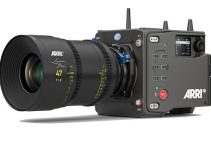Using and understanding the multicam editing features in any non-linear editing software can save you incalculable amounts of time in the edit room. Every professional editing application has some implementation of multicam editing and Adobe Premiere Pro’s is probably the best.
I’ve seen so many timelines where new editors were cutting multicam footage across multiple video tracks rather than creating a single multicam clip, and it has always left me a little perplexed. With just a little bit of prep time at the start, you can sync the video footage and audio from every camera that was rolling – allowing you to easily review, locate, and adjust shots in a flash.
Let’s take a look at this great tutorial from Mark Holtze to see how it’s done.
If it wouldn’t completely blow the budget, I suspect most producers would probably add hundreds of cameras to every shoot – thinking the more the merrier. And although it’s great to have options, having to sift through potentially hundreds of hours of footage really puts a damper on the evening plans of your editor.
Whether it’s just a 2 camera interview, a 4 camera live event, or even a 10 camera reality TV series, somebody has to watch all of that footage and quickly decide what stays and what goes.
Syncing and aligning all of that footage on a timeline and cutting between V1-V10 is actually a lot more work than it seems and it makes things even more complicated when changes need to be made. Through multicam editing, you can review all of that material at the same time, edit on the fly, and maybe even end up with an extra few hours to go outside and have a normal life.
PREMIERE PRO MULTICAM WORKFLOW
- Sort All Of Your Camera Angles Into a Bin For That Event/Scene
- Right-Click The Bin, and Select Create Multi-Camera Source Sequence
- This opens a pop-up box where you can name, and chose how Premiere will sync your footage.
Sync Point Options
Inside the pop-up box you are presented with 5 options for synchronizing your clips.
- In Points
- If you clapped or slated, you must previously have set an In-Point on your clips for this to work
- Out Points
- Exactly like In-Points, but sometimes its best to tale-slate.
- Timecode
- This is my preferred option but it requires you to use cameras that can jam sync to a common TC source in the field.
- Sound Timecode
- Clip Marker
- If you labelled your clips with the same marker.
- Audio
- This is scan the audio that is embedded with your footage to determine the sync point.
- Use this only if all of your clips contain reference/scratch audio that is easily identifiable.
- Sequence Preset: Automatic
- Audio
- Choose either your main audio, to mix all audio, or switch the audio source with the active camera selection.
- Select Ok
This will create a multi-cam sequence and a processed clips folder.
Assuming all things went smoothly with syncing, you’ll now create a new sequence or add this multi-cam sequence to your editing timeline sequence which is as simple as dragging and dropping the ‘clip’ onto or into your timeline window.
All of the synchronized footage will be presented to you as one single video clip on your timeline – pretty cool, eh?
To enable multi-camera editing, click the Multi-Camera view option in Premiere which can be added to your toolbar by clicking the + sign under your program window. You’ll see all of your camera angle options in the source monitor in a grid.
Now for the easy part, editing. Bring your playhead to the start of the sequence, play, and select your angles in real time by either clicking on the angle in the source monitor, or pressing the angle number on the keypad.
You won’t see the cut happening in real-time until you stop the playhead, and minor adjustments and corrections can be made using the rolling edit and trim tools on the timeline. Even cooler, when you want to switch camera angles on an edit all you have to do is highlight the clip and click to make your shot choice.
I usually say there isn’t a wrong way to do anything in post, but if you are editing multi-cam footage and not using the multi-cam editing tools then you’re doing it wrong. Give this a shot and see how much this can speed up your workflow.
[source: Mark Holtze]
Disclaimer: As an Amazon Associate partner and participant in B&H and Adorama Affiliate programmes, we earn a small comission from each purchase made through the affiliate links listed above at no additional cost to you.


